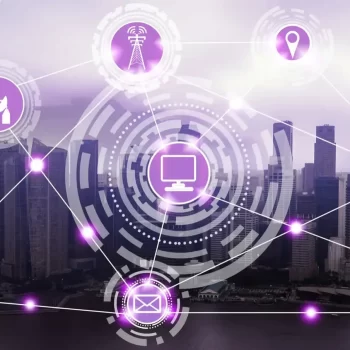In a world where “Have you tried turning it off and on again?” doesn’t cut it anymore, helpdesk operations are under pressure to take a giant leap into innovation. However, 2023 has been a year of game-changing tech, setting the stage for what’s next. So, let’s unpack this evolution and peek into what 2025 has in store, where helpdesks are solving problems before they become issues.
Related article: Transforming Customer Support: An Implementation Guide to Generative AI-Assisted Helpdesks
2023: The changing helpdesk operations landscape
The changing landscape of helpdesk operations in 2023 has been predominantly shaped by a surge in technological adoption aimed at streamlining processes and enhancing user experiences. Some of the key developments include:
Advanced helpdesk analytics
Throughout 2023, helpdesk operations have seen a powerful integration of advanced analytics. This has enabled a deeper understanding of key metrics like ticket volume, resolution time, and customer satisfaction. Real-time analytics have provided helpdesk managers with actionable insights, allowing for rapid responses to emerging trends and issues.
Also, predictive analytics has started to emerge as a critical tool in forecasting demands, aiding in better resource allocation and preparedness.
AI and ML-led support transformation
AI’s role in helpdesk operations has been transformative, particularly in automating responses to common queries. This automation has redirected human agent efforts toward more complex issues, thereby optimizing resource utilization. Additionally, machine learning has been instrumental in categorizing and routing tickets, substantially reducing response times and enhancing overall service quality.
The evolution of AI-powered chatbots has also left an indelible mark on the helpdesk world, with these systems handling a broader range of queries intelligently.
Increased migration to cloud-based platforms
2023 has marked a clear trend towards cloud-based helpdesk platforms. These platforms offer numerous benefits, including scalability, enhanced flexibility, and better accessibility for remote teams. The cloud infrastructure has also facilitated a more resilient and secure environment for helpdesk operations, accommodating the growing need for data protection and regulatory compliance.
Remote support and mobile accessibility
The increase in remote work arrangements has necessitated advancements in remote support capabilities. Helpdesk teams have adapted by employing tools that enable smooth remote diagnostics and troubleshooting.
Mobile accessibility has become a crucial feature, allowing both customers and support teams to interact and resolve issues via smartphones and tablets, offering convenience and immediacy.
2025: What does the helpdesk world have in store?
As we look towards 2024, several key trends are expected to shape the future of helpdesk operations. It includes:
Full-scale automation and AI capabilities
The trajectory for 2024 indicates a move towards more comprehensive automation in helpdesk operations. Enhanced AI capabilities are anticipated to take over more complex tasks, potentially involving decision-making processes based on AI analysis. This evolution is expected to reduce the reliance on human intervention for routine tasks.
The integration of NLP algorithms will also enable AI systems to assess and answer customer queries with greater accuracy and context awareness. ML models will also be continuously refined based on historical data, enabling more intelligent and anticipatory support actions.
Integration of IoT and advanced diagnostics
With the proliferation of IoT devices, helpdesk operations in 2024 will likely integrate IoT data for advanced diagnostics and proactive issue resolution. This integration can enable real-time monitoring of devices, leading to rapid-fire issue detection and resolution, lowering the chances of escalation.
The use of IoT data will facilitate predictive maintenance, allowing helpdesks to alert users of potential device failures before they occur. Moreover, the integration of IoT will enable remote troubleshooting capabilities, reducing downtime and improving the overall support operations.
Personalization-based user experience
User experiences will continue to be a primary focus. Helpdesks will likely employ more sophisticated tools to provide personalized support experiences, leveraging user data to tailor responses and solutions to individual needs and preferences.
This personalization will extend beyond mere user interaction; AI-driven systems will analyze user behavior and preferences to predict needs and offer solutions even before the user reaches out. This proactive approach to personalization will enhance user satisfaction and engagement with helpdesk services.
Cybersecurity and data privacy
As digital interactions increase, so do concerns around cybersecurity and data privacy. In 2024, helpdesk operations will need to place a stronger emphasis on securing communication channels and protecting sensitive user data in line with evolving regulatory requirements and user expectations. This will involve implementing advanced encryption protocols for data transmission and storage, along with regular security audits to ensure compliance.
Also, there will be increased adoption of privacy-preserving technologies, such as differential privacy, to protect individual user data while still enabling the analysis and insights necessary for seamless helpdesk operations.
Related blog: AI-Helpdesk: Beyond Tech Glitches to Customer Delight and Happiness
Conclusion
The year 2025 turned the page for helpdesk operations, ushering in a new chapter where clunky systems are being replaced by nimble, tech-savvy solutions. For instance, AI no longer just automates but anticipates. With regards to cloud computing, it offers not just storage, but scalability. Therefore, as the world cruises towards 2025, it’s all about upping the game with new and emerging technologies.



















